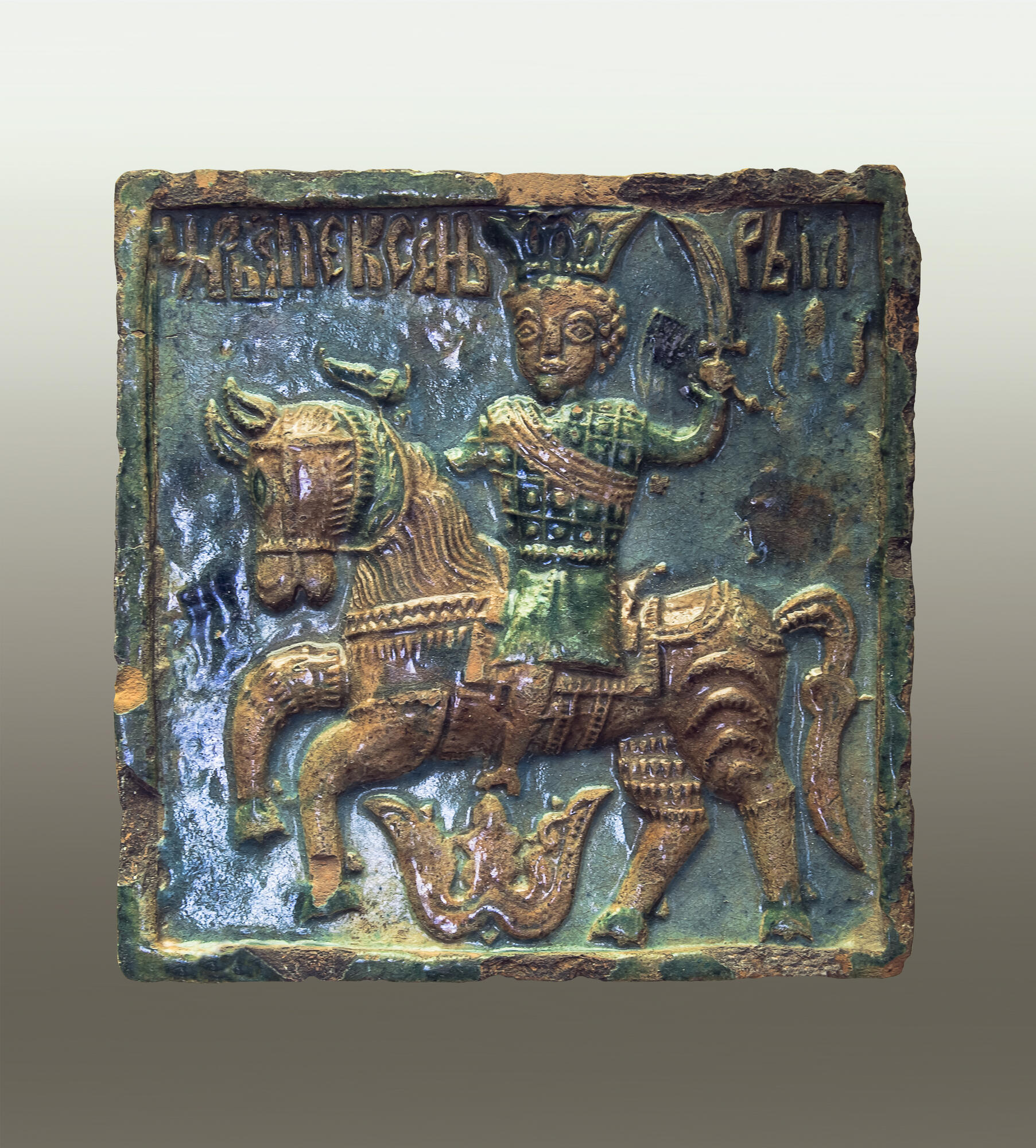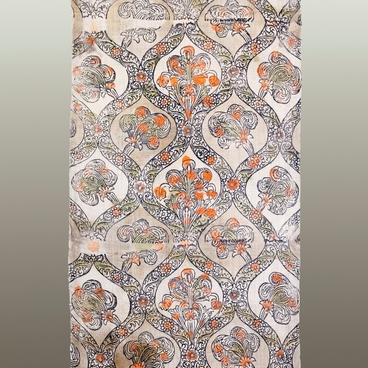One of the favorite subjects on the tiles was the image of Alexander the Great. Alexander gained popularity in Russia in the 14th–15th centuries, when the Old Russian translation of the Greek novel “Alexandria” appeared — a story about the campaigns and life of the famous king. The work described not only the historical deeds of the great commander, but also the myths associated with his life. At the turn of the 17th century, the fame of Alexander the Great reached its peak among the Russian people. His image was depicted on objects of art and crafts, fabrics, amulets, and tiles. In addition, tiles with Alexander the Great could be used not only on stoves, but also on the church walls (architectural tiles). It can be assumed that this was due to the instructive nature of the stories about the great general.
In the presented work, Alexander is depicted as a horseman with a sword in his hand. He wears a crown on the head. His armor, mane and the horse’s harness are rendered in detail. Above the rider is the inscription: “King Alexander M.” The painting is also skillfully executed: Alexander’s chain mail and crown, the horse’s harness, ears, hooves and eyes are carefully painted with green glaze.
Stove tiles often featured the plot depicting Alexander the Great. A vivid example is the tiled stove of the 16th–17th centuries in the Chambers of the Moscow Romanov boyars. Alexander the Great is depicted in the same way, the only difference is that the image is mirrored.
The history of the development of stove tiles has come a long way. Initially, the tiles were terracotta (red) — they were embossed, not glazed, and kept the natural color of clay. Since the 17th century, glazed tiles have become popular: they prevented the stove smoke from penetrating through the porous clay into the rooms. In addition, such tiles did not require whitewashing and could be easily cleaned. Because of their color, they were called “muravlenye” (from the “murava” — an epithet commonly used with grass). Over time, two-color relief works appeared, combining several variants of glazing in their coloring. To create multi-colored tiles, a little trick was invented: the edges of the relief pattern were lifted up and formed separate containers in order to prevent different glazes from spreading and mixing.
In the presented work, Alexander is depicted as a horseman with a sword in his hand. He wears a crown on the head. His armor, mane and the horse’s harness are rendered in detail. Above the rider is the inscription: “King Alexander M.” The painting is also skillfully executed: Alexander’s chain mail and crown, the horse’s harness, ears, hooves and eyes are carefully painted with green glaze.
Stove tiles often featured the plot depicting Alexander the Great. A vivid example is the tiled stove of the 16th–17th centuries in the Chambers of the Moscow Romanov boyars. Alexander the Great is depicted in the same way, the only difference is that the image is mirrored.
The history of the development of stove tiles has come a long way. Initially, the tiles were terracotta (red) — they were embossed, not glazed, and kept the natural color of clay. Since the 17th century, glazed tiles have become popular: they prevented the stove smoke from penetrating through the porous clay into the rooms. In addition, such tiles did not require whitewashing and could be easily cleaned. Because of their color, they were called “muravlenye” (from the “murava” — an epithet commonly used with grass). Over time, two-color relief works appeared, combining several variants of glazing in their coloring. To create multi-colored tiles, a little trick was invented: the edges of the relief pattern were lifted up and formed separate containers in order to prevent different glazes from spreading and mixing.

